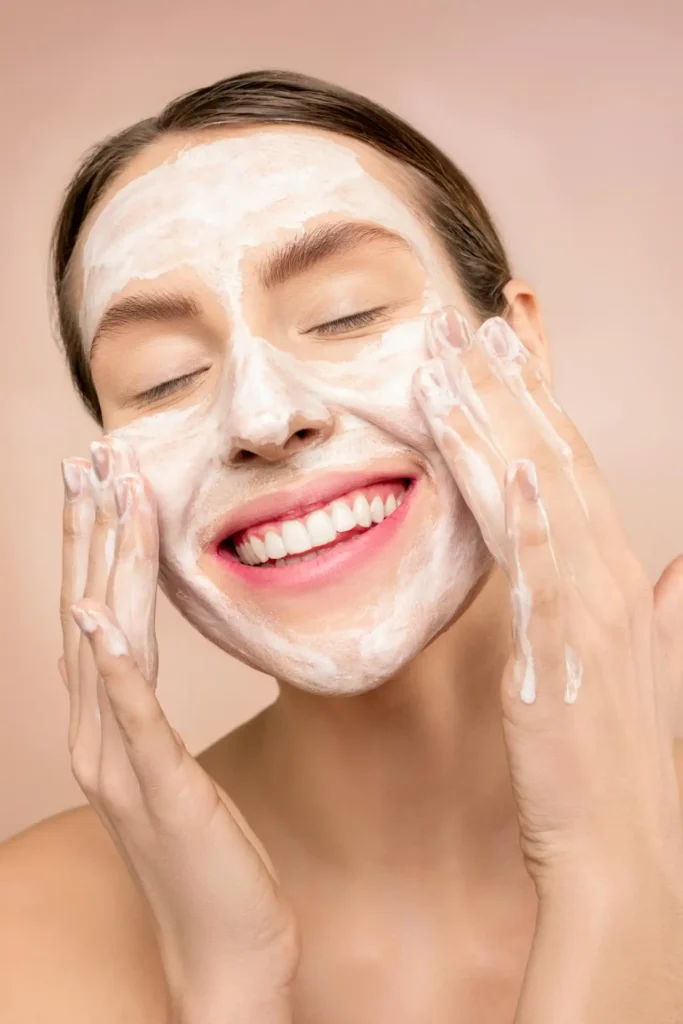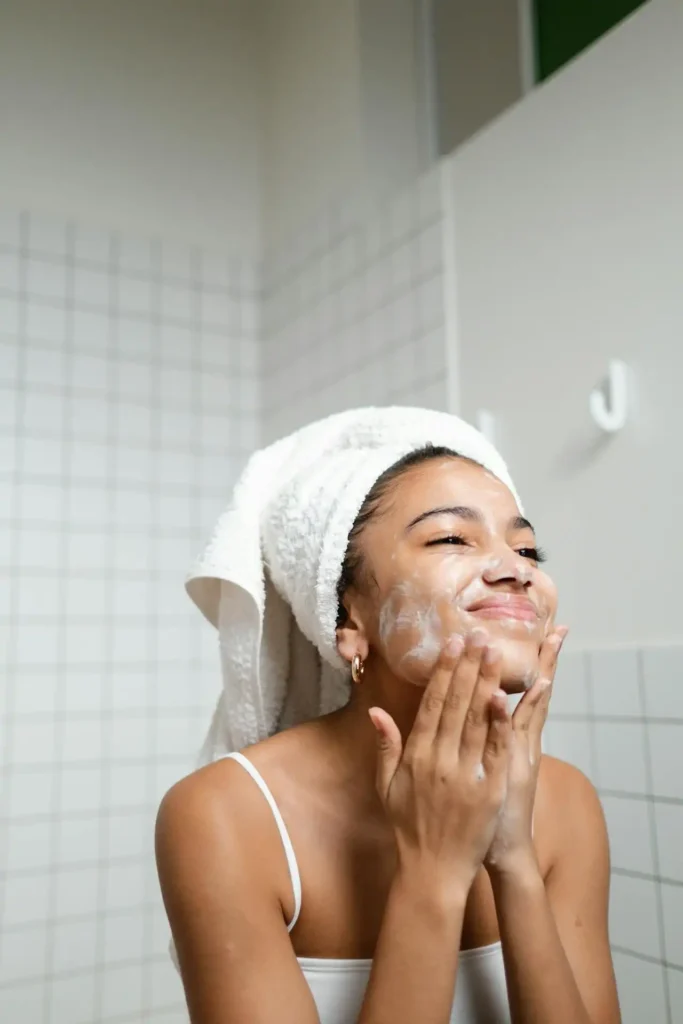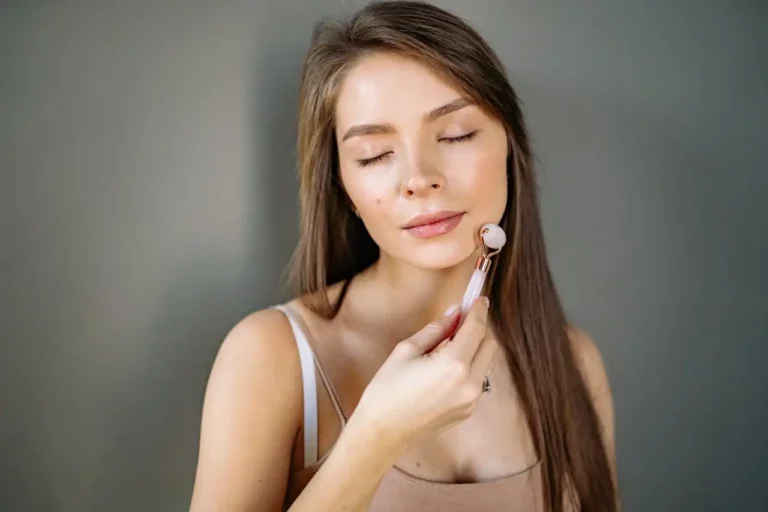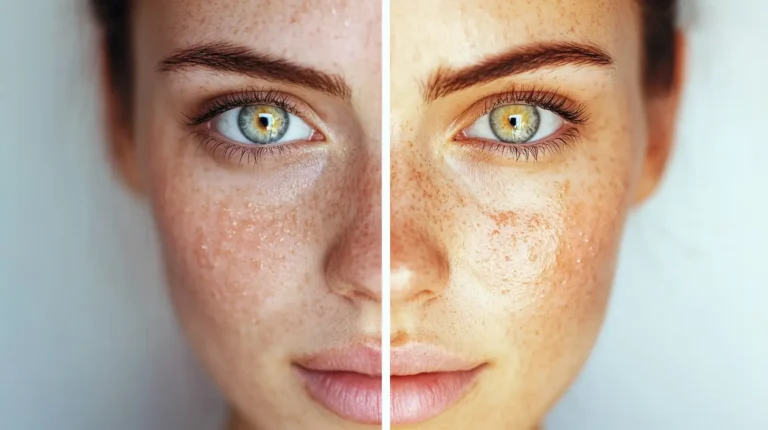3-Step Skincare Routine for Busy Mornings
Mornings rush by faster than you can hit the snooze button. Between checking emails, grabbing coffee, and finding matching socks, skincare often takes a backseat.
But you don’t need a complicated routine to achieve healthy, glowing skin. This simple three-step approach takes just minutes and delivers maximum results.
Step 1: Cleanse Your Way to a Fresh Start

Your skin works overtime while you sleep. It repairs itself, sheds dead cells, and produces natural oils.
When you wake up, you need to clear away this overnight buildup to create a clean canvas for the day ahead.
Choose a gentle cleanser that matches your skin type. If you have oily skin, look for a foaming cleanser with salicylic acid.
Dry skin benefits from cream or oil-based cleansers that won’t strip away essential moisture. Sensitive skin types should stick to fragrance-free, hypoallergenic formulas.
The application process matters just as much as the product you choose. Splash lukewarm water on your face first.
Hot water strips your skin of natural oils, while cold water won’t effectively remove overnight buildup.
Apply a small amount of cleanser to your fingertips and gently massage it across your face in circular motions.
Don’t rush this step, even when you’re running late. Take thirty seconds to work the cleanser across your forehead, cheeks, nose, and chin.
Pay extra attention to areas where oil tends to accumulate, like your T-zone. Your pores will thank you for this brief investment.
Rinse thoroughly with lukewarm water. Leftover cleanser can clog pores and cause irritation throughout the day.
Pat your face dry with a clean towel instead of rubbing. Rubbing creates friction that can lead to redness and premature aging.
Consider keeping cleansing wipes as a backup option for extremely rushed mornings. Look for alcohol-free options that won’t leave your skin feeling tight or dry.
While they shouldn’t replace your regular cleanser daily, quality wipes can remove surface dirt and oil when you’re truly pressed for time.
Step 2: Moisturize for All-Day Hydration
Moisturizer acts as your skin’s protective barrier against environmental stressors. It locks in hydration, prevents water loss, and creates a smooth base for makeup application.
Even oily skin needs moisture – skipping this step often triggers your skin to produce even more oil.
Your morning moisturizer should feel lightweight and absorb quickly. Heavy creams that work well at night can feel greasy under makeup and sunscreen.
Look for formulas labeled as “fast-absorbing” or “non-greasy” if you’re concerned about texture.
Hyaluronic acid deserves a special mention in morning skincare. Many modern moisturizers include hyaluronic acid in their formulations.
This powerful ingredient holds up to 1,000 times its weight in water, making it incredibly effective for maintaining hydration throughout busy days.
Apply moisturizer to slightly damp skin for maximum absorption. The water on your skin helps the moisturizer spread more easily and locks in additional hydration.
Use upward strokes when applying, starting from your neck and working your way up to your forehead.
Don’t forget your neck and the delicate area around your eyes. These spots show signs of aging quickly but often get overlooked in rushed routines.
A small amount of moisturizer applied gently to these areas makes a significant difference over time.
If your skin feels particularly dry, consider adding a hydrating serum before your moisturizer.
Serums contain concentrated active ingredients that penetrate deeper than moisturizers alone.
A few drops of vitamin C serum or niacinamide can boost your skin’s radiance and resilience.
The key to moisturizing success lies in consistency. Your skin adapts to regular hydration and begins to maintain its moisture balance more effectively.
Missing occasional applications won’t cause immediate damage, but skipping moisturizer regularly leads to dehydration, flakiness, and increased sensitivity.
Step 3: Protect With Broad-Spectrum SPF

Sunscreen isn’t optional – it’s the most important step in any morning routine. UV rays cause up to 80% of visible aging signs, including wrinkles, dark spots, and loss of elasticity.
Even on cloudy days, harmful rays penetrate through windows and cloud cover. Choose a broad-spectrum sunscreen with at least SPF 30.
Broad-spectrum protection shields your skin from both UVA and UVB rays. UVA rays cause aging and skin cancer, while UVB rays cause burning.
You need protection from both types to maintain healthy skin. Many people apply too little sunscreen to achieve the stated SPF protection.
You need about a quarter teaspoon of sunscreen to adequately cover your face and neck. This might seem like a lot initially, but proper application ensures effective protection.
Modern sunscreen formulas have come a long way from the thick, white creams of the past.
Today’s options include lightweight lotions, tinted moisturizers with SPF, and even powder sunscreens for touch-ups. Find a texture you enjoy using – you’re more likely to apply it consistently.
Chemical sunscreens absorb UV rays and convert them to heat, while mineral sunscreens create a physical barrier that reflects rays away from your skin.
Both types offer excellent protection when applied correctly. Chemical formulas often feel lighter and blend more easily, while mineral options work better for sensitive skin.
Apply sunscreen as the final step in your morning routine. It should go on after moisturizer but before makeup.
Give it a minute or two to settle into your skin before applying foundation or other cosmetics.
Don’t limit sun protection to your face. Your hands, neck, and any other exposed areas need coverage too.
These spots often show age faster than faces because they receive constant sun exposure but less skincare attention.
Reapplication becomes crucial if you spend significant time outdoors or near windows.
Even the best morning application loses effectiveness after a few hours. Keep a small tube of sunscreen in your purse or desk drawer for midday touch-ups.
Making Your Routine Work for Real Life
Consistency beats perfection when it comes to skincare results. Your skin responds to regular care, not occasional intensive treatments.
You’re better off following a simple three-step routine every day than attempting an elaborate regimen that you abandon after a week.
Prepare your products the night before during particularly hectic periods. Line up your cleanser, moisturizer, and sunscreen in the order you’ll use them.
This small step eliminates morning decision-making and saves precious seconds.
Consider multitasking products when time is extremely limited. However, dedicated products often perform better than combination formulas.
Tinted moisturizers with SPF combine steps two and three, while cleansing oils can remove makeup and cleanse simultaneously.
Keep travel-sized versions of your routine essentials in your gym bag, car, or office. Listen to your skin and adjust products seasonally.
Life happens, and having backup products ensures you can maintain your routine even when plans change unexpectedly.
Your needs change with weather, stress levels, and hormonal fluctuations. What works perfectly in summer might leave your skin feeling tight in winter’s dry air.
Don’t get overwhelmed by skincare trends or complicated routines promoted on social media. Your three-step routine works best when supported by overall wellness habits.
The most effective routine is one you’ll actually follow. These three steps provide the foundation for healthy skin, and you can always add targeted treatments later as time permits.
Track your skin’s progress with photos taken in consistent lighting. Changes happen gradually, and it’s easy to forget how your skin looked before you established a routine.
Monthly photos help you see improvements and determine whether products are working effectively.
Remember that good skincare extends beyond topical products. Adequate sleep, proper hydration, and a balanced diet all contribute to skin health.
Troubleshooting Common Morning Skincare Challenges

Breakouts can derail even the most carefully planned routine. If you notice increased blemishes after starting new products, introduce one item at a time to identify potential triggers.
Sometimes your skin needs a few weeks to adjust to new formulations. Makeup application issues often stem from incompatible skincare and cosmetic products.
If your foundation pills or looks patchy, check the base ingredients in your moisturizer and sunscreen.
Water-based makeup works best over water-based skincare, while oil-based products pair well together.
Time constraints remain the biggest obstacle to consistent skincare. Start by timing your current routine to see exactly how long it takes.
Most people overestimate the time needed for basic skincare. Three minutes of focused attention can accomplish all essential steps.
Skin sensitivity can develop suddenly, even with products you’ve used successfully for months.
Hormonal changes, stress, new medications, and seasonal shifts all affect skin tolerance. When sensitivity occurs, simplify your routine and introduce products gradually.
Budget concerns shouldn’t prevent you from maintaining healthy skin. Effective cleansers, moisturizers, and sunscreens are available at every price point.
Focus on finding formulas that work for your skin type rather than expensive brands with fancy packaging.
Conclusion
Your morning skincare routine doesn’t need to be complicated to be effective.
Cleanse, moisturize, and protect with SPF – these three simple steps set the foundation for healthy, resilient skin that glows throughout your busiest days.







